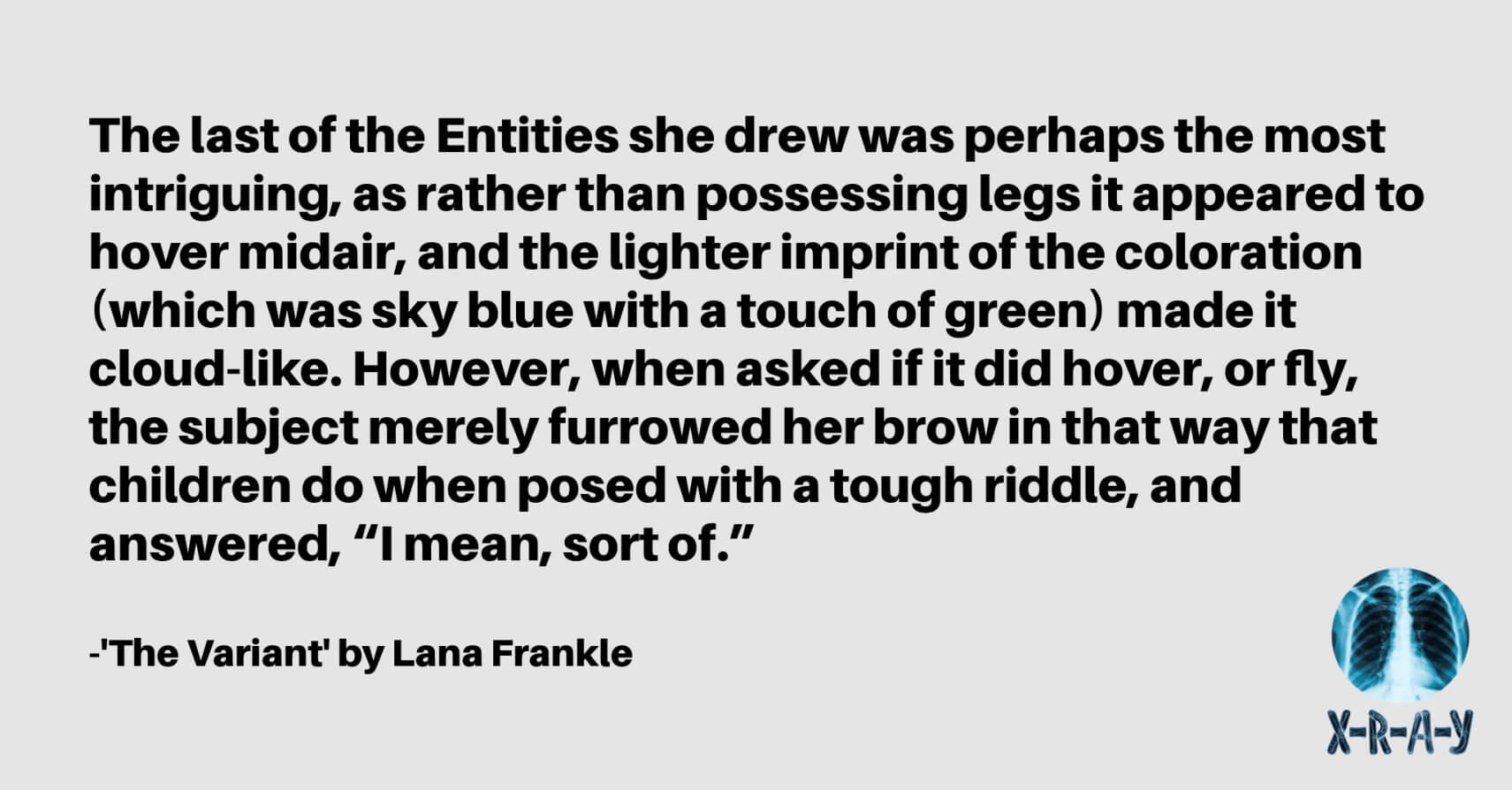In the months since The Visitation there have been ceaseless efforts by the Department of Defense, including within my own division at DARPA, to develop strategies to either obliterate and neutralize the foreign Entities, or (in my own research lab) to counteract or mitigate the seemingly inevitable effects they have on human observers. Thus far, efforts to kill or immobilize these foreign agents have been largely unsuccessful, and this is due mostly to the lack of techniques for localizing and targeting them in ways that circumvent the need for soldiers or others to perceive them. The use of infrared goggles to attack in darkness at night did not prevent the known psychotogenic effects and suicidality in any significant way, and efforts to secure video-surveillance triggered munitions and drones has likewise been unsuccessful due to the lack of known distinguishing features that can be used to identify the targets from other warm bodies such as humans. After the third accidental death, of a toddler, with no confirmed hits on the Beings, the program for automated gunfire and drones to wipe them out was put on hold until better identifiers, whether visual or other, can be found. Our own techniques are less risky, and while they would not eliminate the threats, they show real promise in limiting the severity of reactions to them, which in normal cases range from debilitating to cataclysmic. So far over 15% of the population has succumbed, most of whom die too soon to be assessed or treated, and many of whom kill others before they go. The few we have been able to bring in for consultation are generally useless as they have been reduced to incoherence and frenetic oscillation of their mood, goals, and speech. Others still retreat inwards, becoming near-motionless, affectless, and catatonic. Analysis of brain tissue of those affected post-mortem offered another potential avenue of research, however it proved difficult to draw meaningful conclusions about any neurological effects as the timescale between the initial exposure and death is usually on the order of hours to days, generally too short to allow for clear atrophy, gliosis or synaptogenesis. Our findings based on this approach were therefore inconclusive, although they did allow us to rule out gross tissue damage such as cerebral infarction, ischemia, edema, or encephalopathy – bearing witness to the Beings does not appear to cause stroke, fluid build-up, or tissue swelling.
Fortunately there remains one final and quite promising research opportunity left to pursue: a very small subset of people, somewhere between 0.1% and 0.5%, appear to be largely immune to the ill effects that beset those who look upon the Beings. So far we have only been able to examine one such individual, a thirteen-year-old girl. Two others are rumored to be under study by labs in Atlanta (CDC containment facility) and an old university in Tokyo, however, these reports remain unconfirmed, as currently all televised news media has been cut off and radio reports are intermittent and have limited geographical range. Some of these limitations in media and communication are inadvertent inevitabilities, while others are necessary enforced precautions to limit the spread of images containing the Beings. Electronic communications of any kind, as well as access to electronic databases, are theoretically still accessible to high-level government and military officials, which includes myself, as well as persons with some other very limited essential roles. However, maintaining an internet connection has itself been intermittent due to outages, electric grid failure, the near-impossibility of any maintenance of the system, and general chaos. This means that while we were able to run tests for many genetic markers on our subject, we have so far been completely unable to compare the results to those of other individuals with similar immunity, and analysis of the sequenced regions without such comparators could not suggest a pattern, as absent any polymorphisms or normal inter-individual differences, her genome appeared unremarkable. We do suspect that other similar cases can be found locally, however the obvious limitations on communication and safe mobility make any form of coordination or selection of potential subjects untenable for the time being. We are, however, grateful for the opportunity that has been presented us, and so far we have diligently made use of every means at our disposal to uncover what biological, neurological, psychological and/or soteriological defense mechanisms are at work, and how they might be co-opted or replicated in the general population, or at least in the servicemen responsible for deploying lethal force to rid our society of the Beings.
Our primary base in Arlington has been out of commission since two weeks after the Visitation, the satellite research facility in Virginia Beach has connection to generator-powered electricity and well water, as well as stable architectural foundations and a primary lab space that is several feet underground, all of which makes for ideal research conditions given the larger global circumstances. It is equipped with a physical reference database consisting of decades of published scientific research across multiple disciplines, as well as cable internet, although this connection has so far only worked briefly and on two occasions, the latter of which was unsuccessful in connecting with any other labs or military bases. As mentioned previously, the facility is also limited in terms of the diagnostic instrumentation and other medical research equipment on hand. One of the newer DARPA employees, Major Chambers, an army psychiatrist recruited just a week prior to the Visitation and with no combat zone experience whatsoever, has adamantly insisted since we acquired our test subject that he can perform vital and informative assessments on her neurological and psychological functioning using verbal and cognitive tests alone. While I remained skeptical, his initial interview with the subject was the first time I had heard her speak openly about her witness of the Beings, and I reluctantly acknowledged that our options are currently narrow and granted him full license for any non-invasive tests he might want to run, provided there was negligible physical risk. Several days ago he presented me with some of the subject’s color pencil drawings of the Entities, of which she claims to have seen three. The drawings are quite skilled for a child of her age with no artistic training, but still rudimentary compared to what might have been accomplished by, say, a police sketch artist. It is also of course an open question how much of the drawings’ poor detail was due to an amateur’s lack of skill, and how much was due to the impossibility of conveying an incomprehensible horror whose visual presentation itself may not be standardized between different perceivers.
The first of her drawings features a rotund gray thing with six long, spidery legs bent about halfway up. It features a ring-like raised ridge around the middle of its corpus, like Saturn. Its top is dotted with several protruding bumps, also gray, but darker. It has no discernable face. She calls this one Calye, though she would not say if it told her that name or if she gave the name to it herself. The second also has spindly insect-like legs, but an elongated, brown corpus. The subject mentioned that the color she used was “not quite right” but that she couldn’t find “what the real one would be”. It was ambiguous whether she meant that the color spectrum of the Beings was outside the spectrum of electromagnetic wavelengths typically visible to the human eye or simply that the 32 ct. Crayola colored pencil set provided her was insufficient. The last of the Entities she drew was perhaps the most intriguing, as rather than possessing legs it appeared to hover midair, and the lighter imprint of the coloration (which was sky blue with a touch of green) made it cloud-like. However, when asked if it did hover, or fly, the subject merely furrowed her brow in that way that children do when posed with a tough riddle, and answered, “I mean, sort of.” This being was also interesting because it was the only one which appeared to possess a face, or at least, several rounded circles resembling a single large, compound eye. When asked if she knew whether it was an eye, or if it ever seemed to look at her, or blink, however, the subject replied in the negative.
There appears to be no harm or risk from viewing the drawings themselves, which speaks to the non-transferability of supernatural visual perceptual experiences and the inevitable loss of information at various points along the pipeline of basic sensation, integrated perception, cognitive and emotional processing, and repackaging for communication purposes using either the verbal or visual medium. Additionally, the colored pencil set she was given contained two missing colors (aqua green and light orange), one (violet red) which was broken into two pieces, as well as several others that were quite dull. Artistic tools are not, remember, a category of equipment necessarily kept on hand in either a secret military base or a secret research facility.
Psychosocial interview and debriefing by the scientist about the Beings as well as any relevant background of the subject previously mentioned also proved at least partly fruitful as they revealed the following:
-encounters with the Beings was somewhat disturbing or at least puzzling
-when she saw the first one she found herself staring involuntarily, as one might a trainwreck, despite some slight discomfort akin to, but not exactly like, staring at the brightness of the sun.
She also acknowledged, of her own initiative, that at least part of her fascination with these creatures stemmed not from the direct effect their forms had on her psyche, but from her prior knowledge that what she was witnessing were sights that had drove many others, including her own father and brother, into madness (immediate suicide and attempted attack on her mother with a knife, leading to a bystander shooting him, respectively). These reactions also provide further evidence against the origin of this type of relative immunity having any genetic component, barring the possibility of a de novo mutation, which the limited chromosomal regions on which we performed genetic sequencing fail to fully rule out.
Medical history revealed no major medical conditions, disabilities, past surgeries or injuries, and psychiatric assessment ruled out any serious mental health conditions or history of trauma (prior to the death of her father and witnessing the death of her brother, which given the current societal circumstances are not outside the norm). Her beliefs regarding the supernatural prior to the Visitation, as well as her thoughts about or speculations on (or even knowledge of) the Beings were also probed. While she had not previously been religious or very superstitious (occasionally mixing up “potions” with friends or pretending to be witches, which all sounded relatively normal for her age) she did seem to have atypical attitudes to the Beings, including speculation, despite the trauma and devastation that had directly and indirectly affected her, that they carried a certain message that it was important to decode. When asked for further details on what this message was, however, she merely shrugged and said she didn’t know. “I think a lot more people are going to die, and I don’t think there’s anything you can do about it either, even though I know you’re trying.” is what she is recorded as having said, to which Chambers doing the interview replied, “You’re right, we are trying.” and nothing more.
Various visual and cognitive tests were also performed by Chambers. While her vision was normal at 20/20 and she did not suffer from astigmatism or colorblindness, some tests of visual processing did render abnormal results including slower visual processing (less proficiency at detecting changes in rapidly switching images which showed added and then removed black dots on a white background, as well as movement of these dots to slightly different locations – an ingenious test designed for this purpose by Chambers himself, but based closely enough off of existing psychometric assessments to ensure the ability to form judgements and comparisons with the general population). While she was sometimes able to detect these changes, her accuracy was two standard deviations below the norm, despite her above-average intelligence. With a slower “frame rate” of changes to the layout and positioning of these dots, her accuracy improved significantly and was within normal range. When administered a Wechsler adult intelligence test rather than the Stanford-Binet children’s test (both tests have both children’s and adult versions) it was noted that her performance on Raven’s Matrix Reasoning was also well below two full standard deviations lower than average. Low performance on this test means her ability to predict the expected form of a symbol associated with several other previous symbols which together demonstrate a clear pattern with no a priori description was severely impaired. Her scores on picture arrangement and picture completion were also below normal, but only by one standard deviation. These tests assess for ability to make sense of discrete scenes that can be arranged into a coherent story, and ability to make sense of isolated images with missing features by adding these missing details. Lastly, her answers to the Rorschach inkblot test were highly irregular, not in a way suggesting psychological problems or trauma, but rather in interpretations of ambiguous imagery that take on highly specific, nuanced, and uncommon situations, events, and combinations of objects, such as two cardboard cutouts of South America being held in the cloven hooves of a ram standing on its hind legs. These answers were always given after a lengthy, deliberative pause, but with an air of complete certainty. Taken together, these results point to a general pattern of non-standard conceptual frameworks for visual input. Rather than seeing a few lines in the general shape of a chair as a chair with a missing line or two, for instance, the subject would see half of an oddly shaped horse or a chipped coffee cup with curves missing. Inability to predict the next abstract figure of a sequence, as in Raven’s Matrices, points to the formation of incorrect visual expectations and inability to recognize visual patterns. Trouble noticing changes in the patterns of dots on a screen points to lack of sequential organization in visual construction. Our working hypothesis is that the combination and interaction of these deficits decrease the subject’s ability to process the sheer horror of the Beings. It does this by interfering with the neural impulses of the brain regions responsible for object and scene level construction along the ascending pathways before they can reach the brain regions responsible for semantic-psychological level interpretations, existential terror, horror at the very nature of existence, and unfounded homicidal rage.
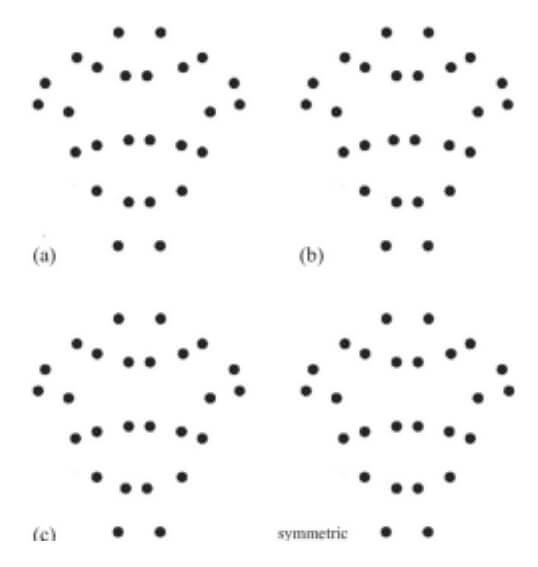
changing dot patterns
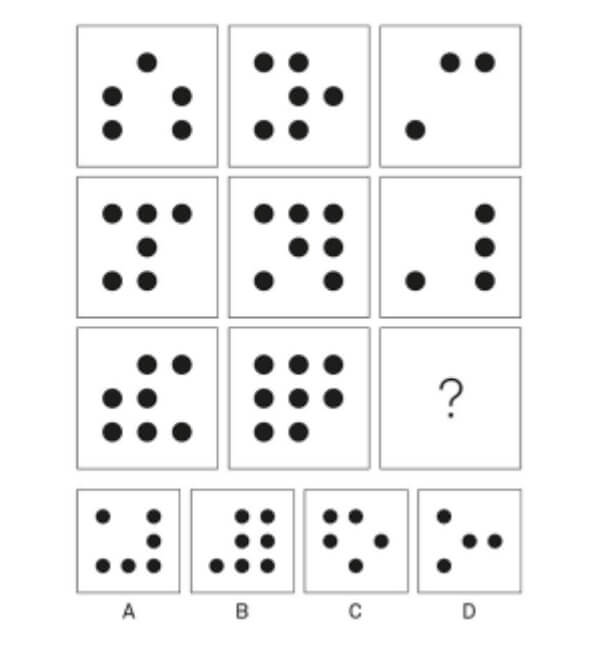
Raven’s test matrix

picture arrangement test
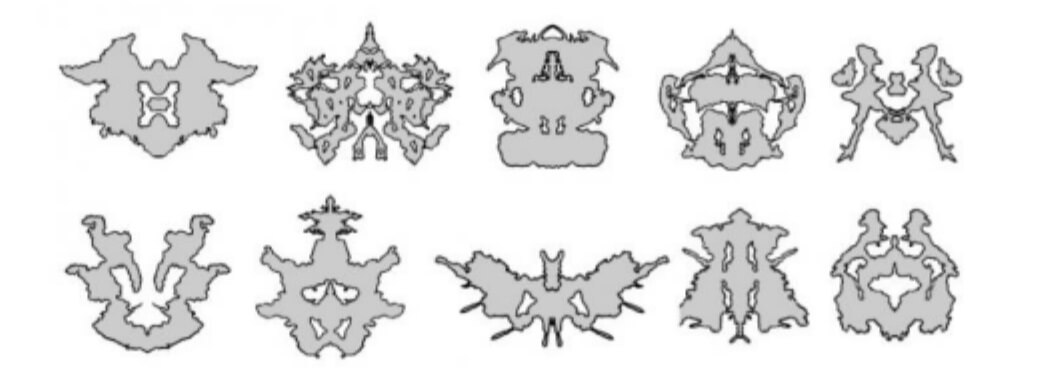
Rorschach test cards
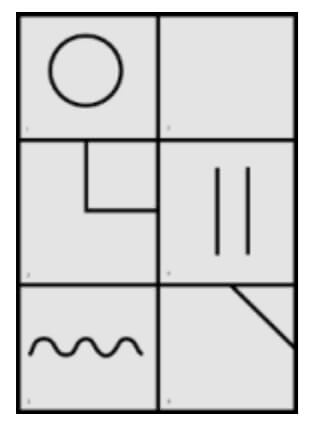
drawing completion test
Our motivations for elucidating these mechanisms are twofold: to provide potential assessment tests available to the public to determine how likely it is that they are among the unsusceptible population (although we will proceed with this objective with extreme caution, if at all, as cognitive and psychological tests are unreliable, especially when self-administered, and any definitive causal relationship currently remains theoretical) and to use the information collected to attempt to induce a similar protection or immunity in previously vulnerable (normal) persons. Currently two different strategies to this end are already underway. The first involves the construction of a kind of physical distortion barrier, namely, protective lenses which can theoretically be manufactured, at least on small scales, for the use of select test populations, mainly the military troops tasked with elimination of the threat. The construction of these goggles will not be trivial and will require a complicated system of optic distortion combing artificial time delay/choppy or lagging video feed and certain image processing tools designed to compress or alter visual information in carefully specified ways, such as by inducing graininess, jitter, or watershed effects to split whole objects (such as the Entities) into collections of discrete parts. The use of this technique has not been tested and there is no way of guaranteeing it will work without testing it directly. However, existing strategies are virtually nonexistent and include trying to quickly look away or shut one’s eyes if a soldier hears the approach of, or glimpses, a Being, which is both ineffective (it generally does not prevent them witnessing it and all subsequent effects) but also almost completely prevents them from actually killing these Beings, which is the entire point of all their existing missions. The second strategy is less straightforward and involves psychological and therapeutic interventions, either as a prophylactic mechanism for those likely to encounter the Entities (again, mostly soldiers – civilians are often inadvertently exposed as well, but any targeted training of them remains unfeasible under current circumstances and they are advised to simply seek shelter and remain hidden and secluded) or to limit post-exposure effects. The therapeutic techniques involve visual training with the use of video feedback, in a setup similar to Eye Movement Desensitization and Reprocessing (EMDR), as well as to existing video feedback military training. Another option which could be applied both prophylactically and in cases of catatonic or disturbed but contained/restrained persons recently exposed to the Beings is the use of cognitive behavioral therapy (CBT) techniques to actively reprocess the trauma of exposure to the Beings in ways that are more aligned with the less harmful, chunked or distorted processing that our subject experiences naturally.
One final cautionary note remains: while we have not been able to maintain steady contact with either the Atlanta lab or the Tokyo lab and do not know much of any information about subjects alleged to be similar, yet another similar subject has been rumored of in Mumbai, and this person (a man in his thirties with a wife and children) was said to be completely immune to the Entities, for several weeks, and became convinced that he was a deity whose duty it was to encounter and document them. He was said to have witnessed and photographed tens of such creatures as he sought them out intentionally, like a storm chaser. And then, it is rumored, he came across one and went mad, just as everyone else, and slaughtered his family. This tragic case (which once
again, is unconfirmed by any reputable source, but was told to me by two people independently, both members of the US military) raises a concerning issue, namely, that even the type of immunity that we and others have documented may not be a complete immunity. It seems possible, and in fact very likely, that there exists at least one and possibly multiple variants of Being which still affect even the lucky few who resemble our subject. What to make of this information Chambers and I are unsure. His suggestion, which does seem plausible, is that there are alternative visual pathways that are utilized by alternative types of visual processing and scene construction, and that there are vulnerabilities that exist aside from the one that is currently known.

